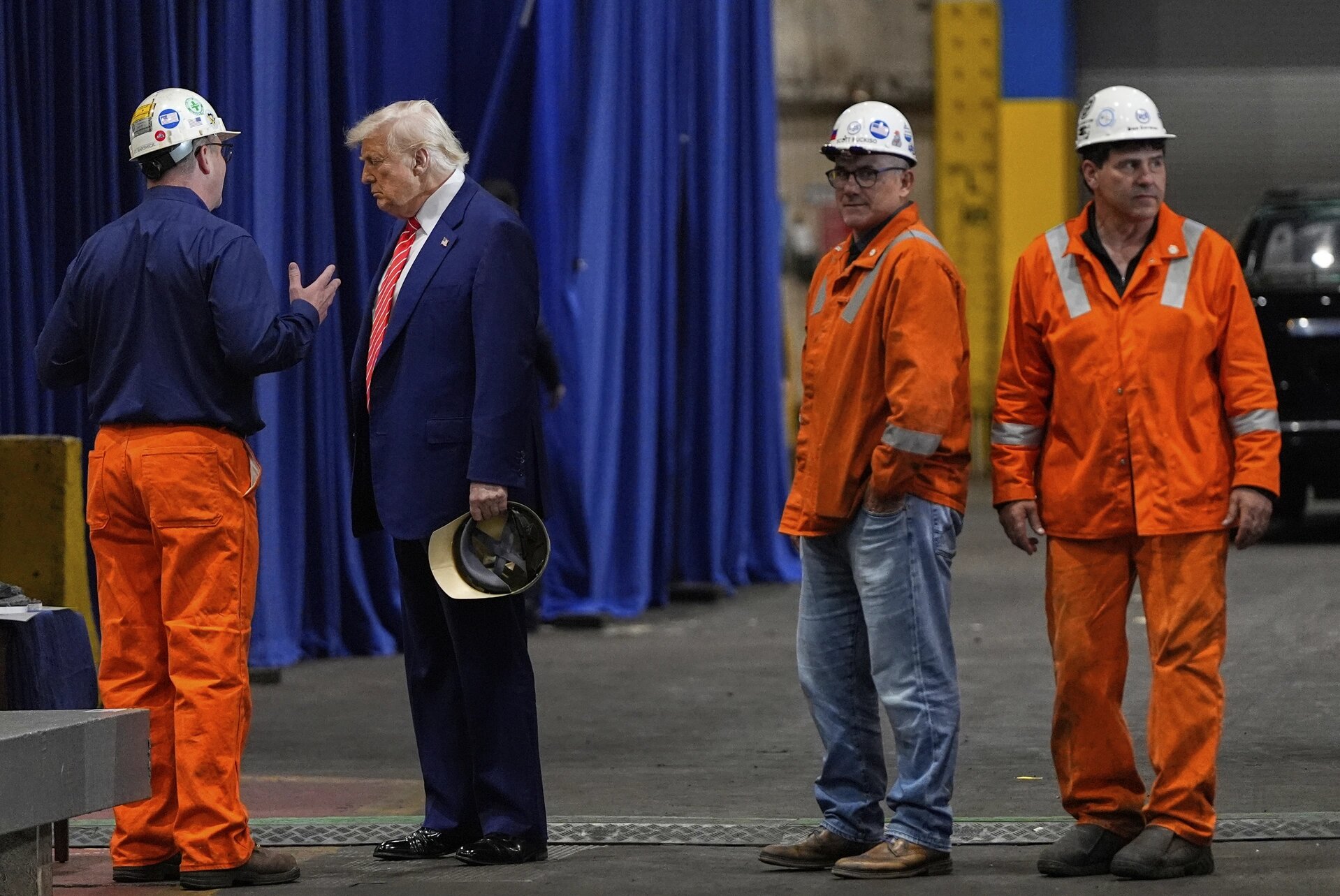Trump is starting to focus on high prices, but slow growth in take-home pay could pose a big risk to Republicans before next year’s midterms.

The drubbing that Republicans took at the ballot box last week highlighted President Donald Trump’s weakness on the issue of affordability. But if voters are frustrated over high prices, the GOP’s challenges are unlikely to be resolved until consumers see a pickup in their paychecks.
Inflation-adjusted wage growth has been falling, government and private-sector data show, with inflation climbing faster than after-tax pay for lower- and middle-income households since the start of the year, the Bank of America Institute says. The rate of real income growth has slowed to levels last seen in the early 2010s, when the economy was still recovering from the financial crisis and the unemployment rate was roughly double what it is today.
All of this has coincided with declines in Americans’ perceptions of their own financial health and mounting pessimism over how they’ll fare in the next year. While few economists expect to see mass layoffs or surging unemployment, a dropoff in job postings and employers’ reluctance to hire new workers don’t bode well for anyone looking to get a raise.
“We’re clearly going through a soft patch now,” said Gary Schlossberg, an economist and global strategist for the Wells Fargo Investment Institute. “Households are going to be feeling some pain. [And] if you’re focused on the trajectory of wage inflation, I think it will be slower next year.”
That could pose a serious risk to Republicans as they scramble to fine-tune their economic messaging before the midterms next year. Trump insists that inflation “is way down” and that “everybody knows that it’s far less expensive under Trump than it was under Sleepy Joe Biden.”
But while voters have historically afforded both Trump and his party meaningful polling advantages over Democrats on the economy, that edge has faded since the start of his second term. As the labor market cools and inflation edges higher, just 34 percent of voters approve of the president’s handling of the economy, according to a Reuters/Ipsos poll, matching Biden’s results in the final days of his administration.
The White House did not respond to a request for comment.
Trump’s own advisers suggest that he’ll be more focused on prices and cost-of-living issues moving forward. The president has floated the prospect of using tariff revenue to send $2,000 checks to low- and medium-income American households. In recent days, he has also moved ahead with deals intended to reduce the cost of certain prescription drugs and pitched 50-year mortgages that could reduce monthly costs for homebuyers.
Treasury Secretary Scott Bessent says consumers will soon see the benefits of the tax bill that Republicans passed earlier this year.
Those tax cuts will put more money in people’s pockets and improve purchasing power, particularly among the wealthy. And Trump’s crackdown on immigrants might limit future declines in wage growth for lower-income positions that have long been filled by foreign-born workers, Recruitonomics Chief Economist Andrew Flowers said.
But for now, the slowdown in take-home pay has been much more pronounced for Americans in lower-paying jobs, according to Bank of America’s analysis. After-tax wages and salaries for high-income households grew at an annual rate of 3.7 percent in October, compared with just 1 percent for those at the bottom rungs. That’s tied for the widest gap since BofA started tracking household income growth in early 2016.
And lower-income populations are much more sensitive to changes in prices, particularly for staples like food and electricity. Inflation has continued to rise north of the Federal Reserve’s annual 2 percent target, even with the slowdown in wage growth.
While Fed Chair Jerome Powell and other central bank policymakers are expected to lower interest rates by a quarter point when they meet next month — which would theoretically stimulate hiring — a further escalation in prices would limit the case for future cuts.
“It is inarguable” that the inflation picture is “worse today than it was at the start of the year, or a year ago,” Flowers said.
Furthermore, while Trump’s immigration policies might limit declines in wage growth in sectors like construction, agriculture and food services, other industries will not be as sensitive to the effects of the president’s border agenda.
Layoff announcements surged last month as large companies moved to cut costs and consolidate their workforces, according to the global outplacement firm Challenger, Gray and Christmas. CEOs of large tech and financial services firms have increasingly signaled that they want to keep down their head counts as they face market pressure to adopt artificial intelligence software or automate.
That’s created significant headwinds for workers who are just starting their careers. Income growth for people between the ages of 25 and 29 — typically a period when earnings power accelerates more rapidly — has deteriorated since the early part of the decade. As demand for labor has slowed, younger workers have fewer opportunities to increase their wages by switching jobs.
“Real purchasing power growth is low,” said George Eckerd of the JPMorgan Chase Institute. And “it’s particularly low for young people.”
